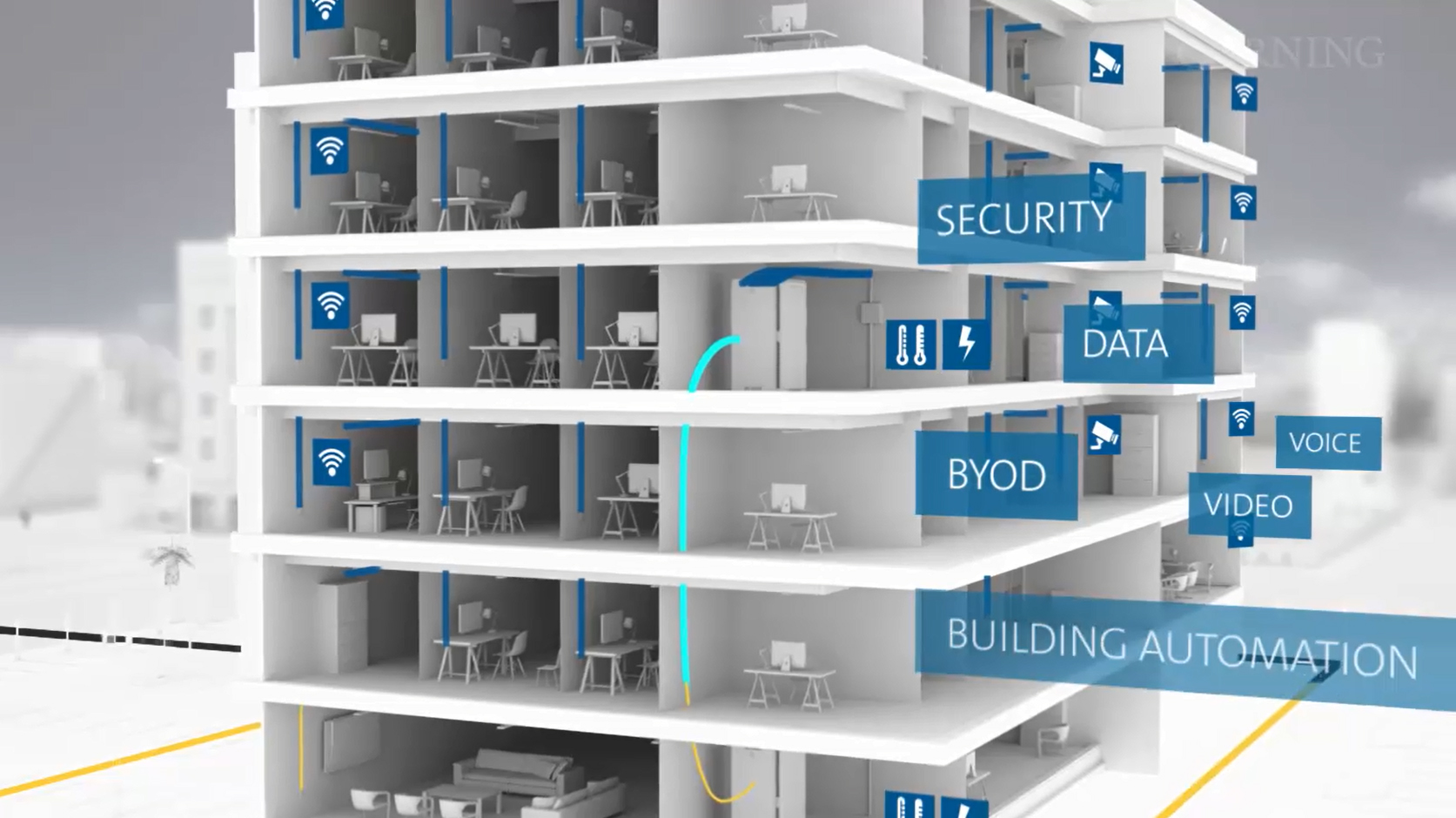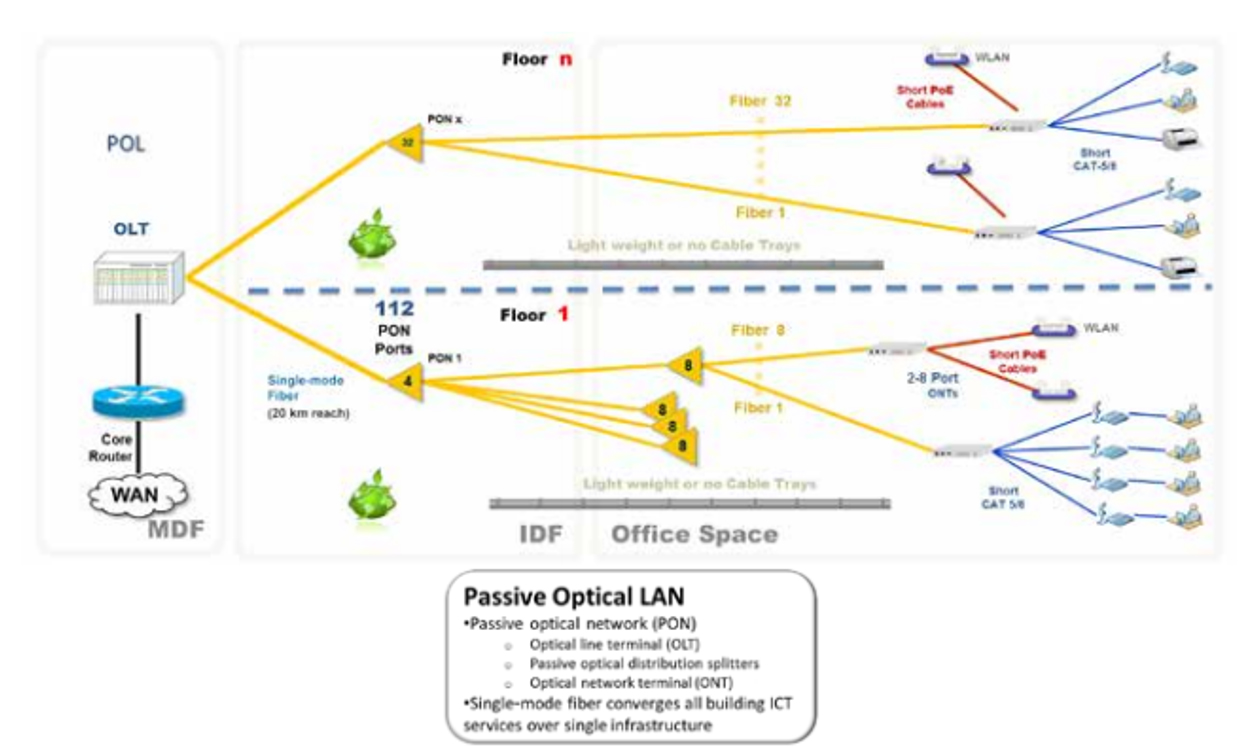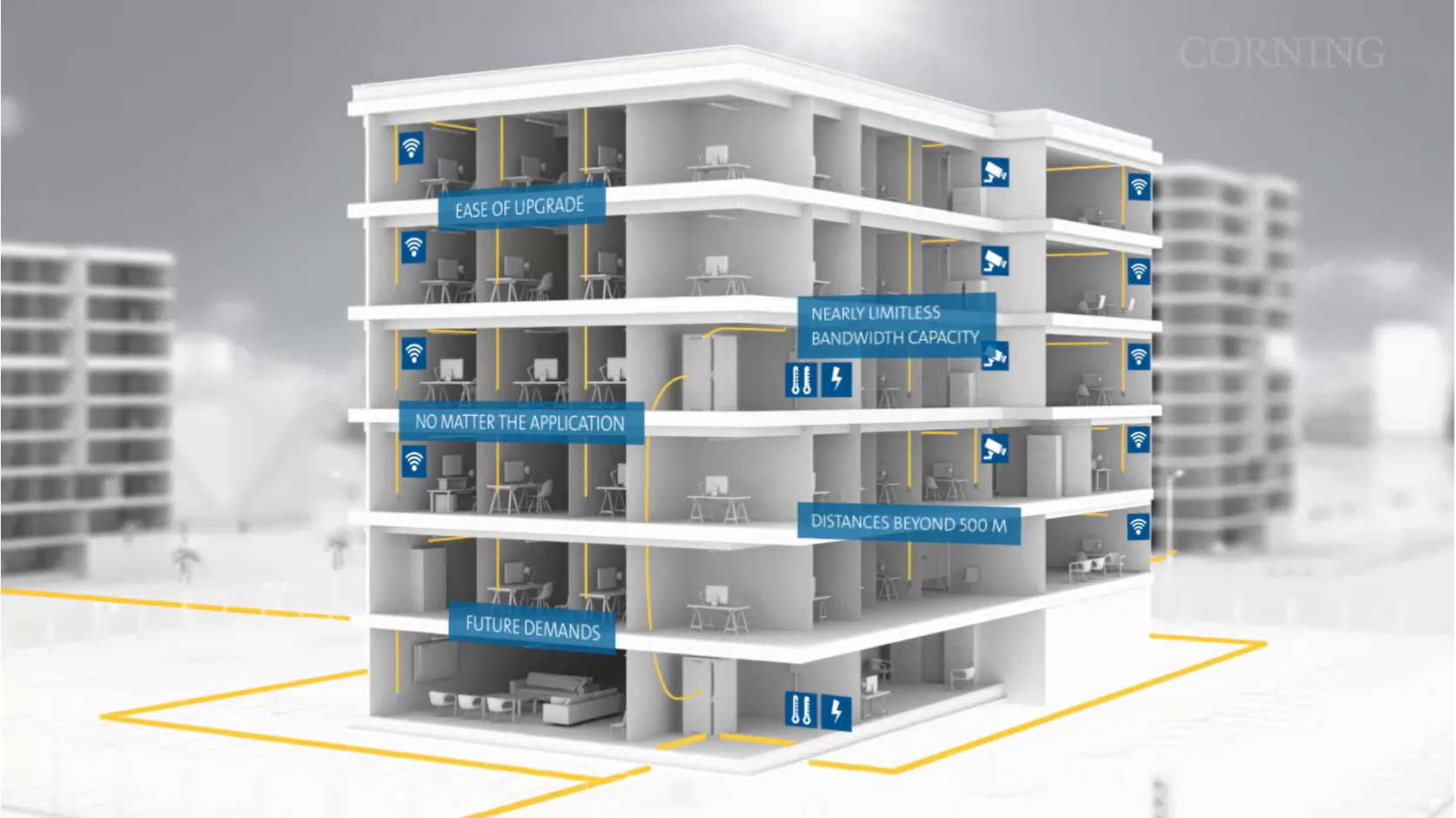More and more businesses prefer optical fibre to copper networks given its benefits in enterprise environments. A passive optical network (PON) is a fibre optic network that does not require active components for signal distribution and replaces the aggregation electronics and associated copper cables in a traditional switch-based architecture with passive optical splitters and single-mode fibres (SMF). This creates an architecture that is lower in cost to purchase, install and maintain – and with a far longer life span – than traditional copper architectures.
Passive Optical LAN (POL) is the application of passive optical network (PON) technology in a local area network environment. There are four things to look for in passive optical networks. First, one must ensure splitter technology integrates seamlessly into the enterprise. Corning designed a POL solution specifically for local area networks. The optical splitters integrate directly into a wall-and rack-mountable hardware.
Second, one must choose optical splitters that are proven to be reliable. POL promised a long-term solution to meet future bandwidth requirements, without having to repeatedly replace the existing horizontal infrastructure, when it was first introduced almost ten years ago as a replacement for a traditional active Ethernet architecture. While PONs were originally created to provide fibre-to-the-home (FTTH) or fibre-to-the-premises (FTTP), their advantages soon became apparent in end-user access applications. Thus, there is a marked progression into the fibre-to-the-desktop solutions in use today.
Last, one must leverage band-insensitive fibre technology and match a chosen installation method to a building’s design requirements. POL can address many issues of today’s traditional network topology. POL is especially useful in enterprise environments, like office buildings and campuses, which require cabling system infrastructures with higher density and ongoing moves, additions, and changes.





